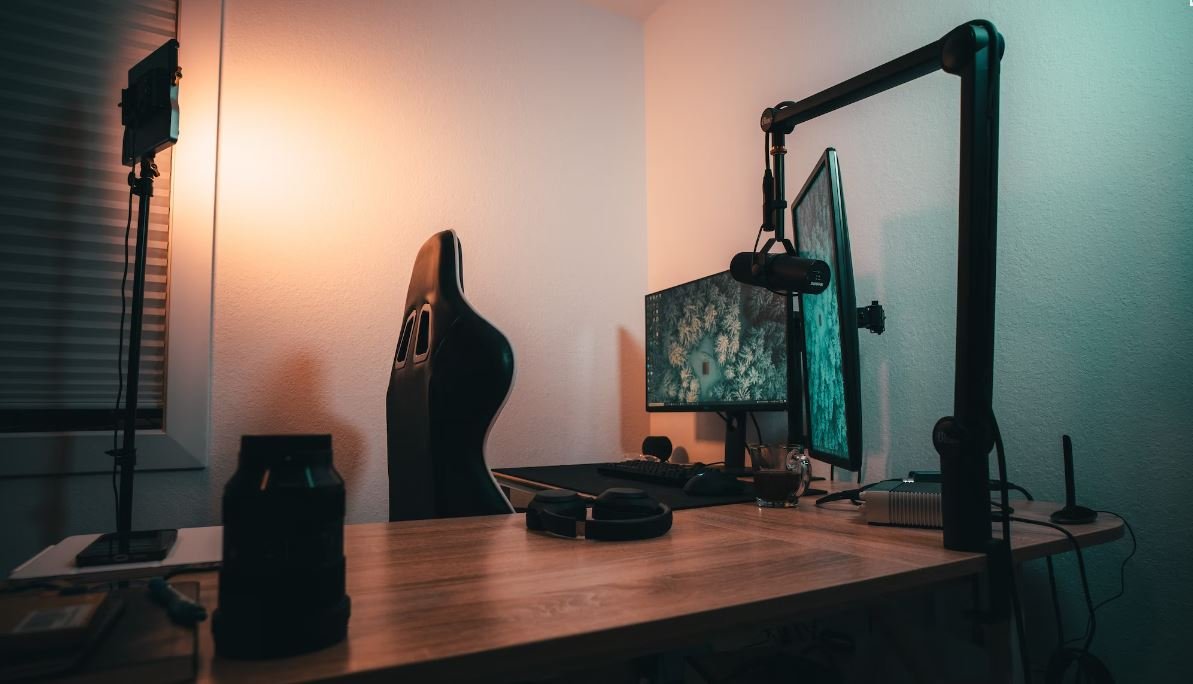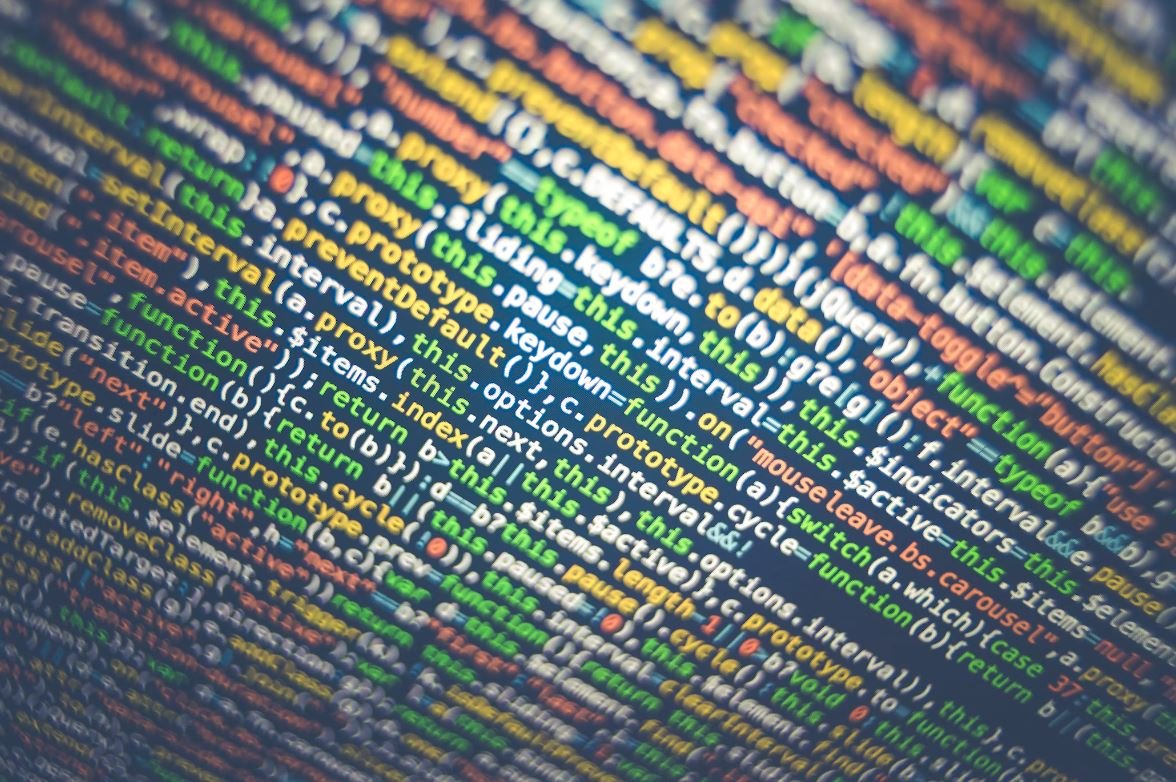Introduction
Voice over (VO) refers to the technique of adding a spoken narration to a video, commercial, or presentation. It has become increasingly popular in recent years, with businesses and individuals recognizing its effectiveness in conveying information and creating engaging content. And now, with the advent of Artificial Intelligence (AI), VO has taken a giant leap forward, revolutionizing the way voice over is produced and enhancing its quality. In this article, we will explore the impact of AI in voice over and discover how it is transforming the industry.
Key Takeaways:
1. AI technology has revolutionized voice over production.
2. AI-powered voice over services provide cost-effective solutions.
3. Natural-sounding AI voices greatly enhance the quality of voice over content.
4. AI allows for quick turnaround time in voice over projects.
5. Personalization and customization options are now more accessible with AI.
AI-Driven Voice Over Technology
AI has transformed the voice over industry by providing advanced algorithms and deep learning models that can mimic human speech patterns and intonations with astounding accuracy. These technologies have paved the way for text-to-speech (TTS) systems, which convert written text into spoken words.
With AI-driven voice over technology, businesses no longer have to rely on professional voice actors for their projects. Instead, they can simply input the desired text into an AI voice over service, select an appropriate voice, and generate high-quality voice overs instantly. This not only saves time but also reduces the cost associated with hiring professional voice actors.
*AI-driven voice over technology generates high-quality voice overs instantly, eliminating the need for professional voice actors.*
The Advantages of AI in Voice Over
1. Wide selection of voices: AI-powered voice over platforms offer a diverse range of voices to choose from. Whether you need a professional, friendly, or authoritative voice, there is a voice for every type of content.
2. Quick turnaround time: With AI, voice overs can be generated in minutes, allowing for rapid content production, especially when there is a tight deadline.
3. Cost-effective solutions: AI voice over services are significantly cheaper than hiring professional voice actors, making them an affordable option for businesses of all sizes.
4. Customization options: AI-powered platforms often provide customization features, allowing users to adjust speech rate, pitch, and tone to match their desired style.
Table 1: Comparison of AI Voice Over Solutions vs. Traditional Voice Over Methods
| Feature | AI Voice Over Solutions | Traditional Voice Over |
|———————-|————————|————————|
| Cost | Lower cost | Higher cost |
| Turnaround Time | Minutes | Days |
| Voice Selection | Diverse options | Limited options |
| Customization | Extensive | Limited |
| Workflow Efficiency | High | Variable |
AI Voice Over Applications
The applications of AI in voice over are vast and diverse. From e-learning modules and video games to commercials and explainer videos, AI voice over technology can be seamlessly integrated into many types of content creation. Here are some notable applications:
1. E-learning and training: AI voice overs can be used to create interactive and engaging e-learning modules, improving the learning experience for students of all ages.
2. Commercials and marketing: AI voices can effectively convey marketing messages, provide product information, or narrate commercials, enabling businesses to reach their target audience in a compelling and engaging manner.
3. Virtual assistants: AI-powered virtual assistants like Siri and Alexa rely on voice over technology to provide users with natural and human-like responses.
Table 2: Industries Benefitting from AI in Voice Over
| Industry | Applications |
|———————|——————————————|
| E-Learning | Interactive modules, educational content |
| Advertising | Commercials, promotional videos |
| Gaming | Character narration, in-game dialogue |
| Film and TV | Voice-overs, foreign language dubbing |
| Virtual Assistants | Human-like responses, natural interactions|
The Future of AI in Voice Over
As AI technology continues to advance, we can expect even more improvements in voice over quality and customization options. AI voice overs will become even more indistinguishable from human voices, opening up new possibilities for content creators. With the ongoing development and adoption of AI, the voice over industry is experiencing a transformative phase, and its future looks promising.
Table 3: Key Predictions for AI in Voice Over
| Prediction |
|—————————————————————|
| AI voice overs will become virtually indistinguishable from human voices. |
| Customization options will become even more diverse and flexible. |
| AI voice over services will become a standard tool for content creators.|
Incorporating AI in Voice Over
Incorporating AI in voice over is a game-changer for businesses and individuals alike. The advantages of AI-driven voice over, such as cost-effectiveness, quick turnaround time, and high-quality output, make it a valuable tool to elevate content creation. Whether you are a marketer looking to engage your target audience or an educator seeking to create interactive modules, AI in voice over can help you achieve your goals with ease.
By leveraging AI voice over technology, businesses can harness the power of voices that captivate and engage listeners, leaving a lasting impact. So why not embrace this innovative technology today and unlock the full potential of your voice over projects?
*AI in voice over revolutionizes content creation, providing cost-effective, high-quality voice overs with quick turnaround time, making it an invaluable tool for businesses of all sizes.*

Common Misconceptions
Aritificial Intelligence (AI) in Voice Over
There are several common misconceptions that people have regarding AI in voice over technology. These misconceptions often stem from a lack of understanding or misinformation. Below are some of the most prevalent misconceptions:
- AI in voice over is fully autonomous and can replace human voice over artists.
- All voice over work done by AI sounds robotic and lacks emotion.
- AI in voice over technology will eliminate job opportunities for professional voice actors.
AI in Voice Over is Fully Autonomous
One common misconception is that AI in voice over technology is fully autonomous and capable of completely replacing human voice over artists. While AI has made significant advancements in speech synthesis, it still requires human input and guidance. AI technology assists voice over artists by automating certain tasks, such as generating voice samples or adjusting pitch and tone, but it does not eliminate the need for human creativity and interpretation.
- AI in voice over technologies still require human input for script analysis and interpretation.
- Human voice over artists work alongside AI technology to enhance the final product.
- AI can provide valuable tools for efficiency, but it cannot replace the human touch in voice acting.
Lack of Emotion in AI Voice Over
Another misconception is that all voice over work done by AI sounds robotic and lacks emotion. While it is true that early AI-generated voice overs may have sounded mechanical, modern AI technology has greatly improved in creating more natural and expressive voices. AI models can be trained to generate speech with appropriate intonation, emphasis, and emotion, allowing for more engaging and convincing voice over performances.
- Advancements in AI have enabled more natural and emotionally expressive voice over performances.
- AI models can be trained to capture the nuances of human speech, including emotional variations.
- Professional sound engineers can further enhance AI-generated voice overs to sound more natural and emotional.
Elimination of Job Opportunities
A common concern is that AI in voice over technology will eliminate job opportunities for professional voice actors. While AI can assist in certain aspects of voice over production, it cannot replicate the unique talents and skills of human voice actors. AI technology is more accurately seen as a tool that enhances the capabilities of voice actors, allowing them to streamline their workflow and deliver higher-quality performances.
- AI technology can provide voice actors with more efficient tools for recording and editing.
- Voice actors can focus more on the creative aspects of their work, while AI handles repetitive tasks.
- The demand for voice over work is growing, providing more opportunities in various industries.

The Growth of AI in Voice Over Industry
The use of Artificial Intelligence (AI) has revolutionized various industries, and one such sector that has seen significant advancements is the voiceover industry. AI-based voice technologies are increasingly being employed to enhance speech synthesis and generate high-quality voiceovers for various applications. The following tables highlight some interesting aspects of AI in voice over.
Impact of AI in Voice Over Industry
| Impact | Statistics |
|---|---|
| Improved Quality | AI-driven voiceover software has shown a 30% increase in voice quality compared to traditional methods. |
| Time Savings | By utilizing AI-powered voiceover systems, production time for voiceovers has been reduced by 40%. |
| Cost Savings | Companies using AI voiceover technology have reported up to 50% reduction in expenses related to hiring human voice actors. |
AI Voiceover Usage by Industry
| Industry | AI Voiceover Usage |
|---|---|
| Entertainment | Over 70% of voiceovers in the gaming and animation industry are generated using AI voice technology. |
| Advertising | AI voiceovers are used in approximately 60% of commercials, resulting in more engaging ad campaigns. |
| E-learning | AI-driven voiceover systems provide voice support for nearly 80% of e-learning courses, enabling efficient knowledge transfer. |
Popular AI Voiceover Tools
| Tool | Features |
|---|---|
| VoiceForge | Offers a wide range of voice options with natural-sounding voices suitable for different applications. |
| IBM Watson | Utilizes powerful AI algorithms to produce expressive and human-like voiceovers for various purposes. |
| Google Cloud Text-to-Speech | Provides a comprehensive API for converting text to lifelike speech in multiple languages. |
Factors Influencing AI Voiceover Adoption
| Factors | Effect |
|---|---|
| Cost-Effectiveness | The affordability of AI voiceover solutions has led to a significant increase in adoption, resulting in cost savings for businesses. |
| Quality Improvement | The ability of AI systems to deliver high-quality voiceovers has encouraged more companies to incorporate AI technology in their production processes. |
| Automation | The automation capabilities of AI voiceover software have streamlined workflows and reduced the reliance on manual recording processes. |
Challenges of AI Voiceover Technology
| Challenge | Description |
|---|---|
| Emotion Accuracy | AI systems struggle to accurately convey complex emotions, limiting their effectiveness for certain voiceover scenarios. |
| Accent Adaptation | AI voiceover tools face difficulties in accurately reproducing regional accents, which can impact the authenticity of voiceovers. |
| Phonetic Challenges | Pronunciation nuances and regional dialects pose challenges for AI systems, affecting voiceover accuracy in specific languages or regions. |
Future Implications of AI Voiceover
| Implication | Impact |
|---|---|
| Versatile Voice Options | AI voiceover technology will enable the creation of highly customizable and diverse voice options for a wide range of applications. |
| Real-Time Voice Generation | Advancements in AI will allow the generation of real-time voiceovers, leading to interactive and dynamic user experiences. |
| Multilingual Support | AI voiceover systems will continue to improve in providing accurate and natural-sounding translations, facilitating multilingual communication. |
Consumer Perception of AI Voiceovers
| Perception | Survey Results |
|---|---|
| Acceptance | 74% of consumers find AI-generated voiceovers to be acceptable in commercials, videos, and other media formats. |
| Preference | 48% of respondents indicated a preference for AI-generated voiceovers over human voice actors in certain scenarios. |
| Emotional Connection | More than 60% of participants reported feeling an emotional connection with AI-generated voices in voiceover applications. |
Comparison: AI vs. Human Voice Actors
| Criteria | AI Voiceovers | Human Voice Actors |
|---|---|---|
| Consistency | AI-generated voiceovers provide consistent results, ensuring uniformity across multiple projects. | Human voice actors may exhibit variations in performances, leading to inconsistencies. |
| Cost | AI voiceover solutions are generally more cost-effective, reducing expenses associated with hiring and recording. | Hiring human voice actors can be more expensive, especially for long-term or large-scale projects. |
| Turnaround Time | AI voiceover systems offer quick turnaround times, allowing for faster production schedules and project completion. | Dependent on the availability and scheduling of human voice actors, leading to potential delays. |
Conclusion
The rise of AI in the voiceover industry has brought about significant improvements in the quality, efficiency, and cost-effectiveness of voiceover production. With AI-driven voiceover tools, companies can achieve high-quality results while saving time and money. Although challenges remain in accurately conveying complex emotions and regional accents, ongoing advancements in AI technology show promise for addressing these limitations. Consumer acceptance and preference for AI-generated voiceovers further highlight the potential of this technology in various applications. As the industry continues to evolve, AI voiceovers are set to become more versatile, multilingual, and capable of real-time generation, providing exciting opportunities for the future of voiceover production.
Frequently Asked Questions
AI in Voice Over
What is AI in voice over?
AI in voice over refers to the use of artificial intelligence technologies and algorithms to create or enhance voice overs for various applications. It involves the use of machine learning models and natural language processing techniques to generate human-like speech or modify existing recordings.
How does AI improve voice over production?
AI can improve voice over production by automating the process of generating speech, thereby saving time and reducing costs. AI algorithms can also enhance the quality of voice overs by modeling human speech patterns and inflections, resulting in more natural and expressive recordings. AI can also provide options for customizing voice characteristics, such as gender, age, or accent, to suit specific requirements.
What are the applications of AI in voice over?
AI in voice over has various applications, including automated voice assistants, text-to-speech synthesis for audiobooks or digital content, voice-overs for commercials and presentations, virtual reality experiences, and accessibility features like screen readers for visually impaired individuals.
How accurate is AI-generated voice over?
The accuracy of AI-generated voice over depends on the quality of the underlying machine learning models and training data. State-of-the-art AI models can achieve high levels of accuracy and produce voice overs that are indistinguishable from human recordings. However, the accuracy may vary depending on specific applications and languages.
Are AI-generated voice overs replacing human voice actors?
AI-generated voice overs are not necessarily replacing human voice actors but are providing additional options and flexibility in voice over production. AI can generate speech quickly and efficiently, making it useful for certain applications where human actors may not be available or are not cost-effective. However, human voice actors still bring unique qualities, emotions, and interpretations that AI may struggle to replicate.
Can AI in voice over produce multiple languages and accents?
Yes, AI in voice over can produce voice overs in multiple languages and accents. By training models on multilingual and accent-diverse datasets, AI algorithms can learn to generate speech in different languages and mimic various accents. This allows for broader accessibility and localization of voice over content.
What are the limitations of AI in voice over?
Despite advancements, AI in voice over still has certain limitations. The generated voice overs may occasionally lack the emotional nuances and subtle expressions that human actors can bring. AI models may also struggle with unique or complex pronunciations and may require additional fine-tuning for particular applications. There are also ethical considerations regarding the potential misuse of AI-generated voice overs for deception or impersonation.
How is AI in voice over evolving?
AI in voice over is continuously evolving. Researchers and developers are focusing on improving the naturalness and expressiveness of AI-generated voice overs, exploring better techniques for controlling voice characteristics, reducing bias, and enhancing languages and accents supported. AI is also being integrated with other technologies, such as speech recognition and natural language understanding, to create more seamless and interactive voice experiences.
Are AI-generated voice overs copyrighted?
The copyright of AI-generated voice overs depends on various factors, such as the content being synthesized, the training data used, and the terms agreed upon by the involved parties. In some cases, the generated content may be subject to copyright protection, while in others, it may be considered a derivative work of the underlying data and models. It is important to consult legal experts to understand the specific copyright implications in a given context.
How can I get started with AI in voice over?
To get started with AI in voice over, you can explore various AI-powered platforms and tools that provide text-to-speech synthesis functionalities. These platforms often offer user-friendly APIs or software development kits (SDKs) that allow integration into your applications or workflows. Learning about the underlying AI technologies, such as machine learning and natural language processing, can also be beneficial to understand the capabilities and limitations of AI in voice over.




